Cutting Edge Garden Maintenance: Sharply Defining Beds & Borders . . .
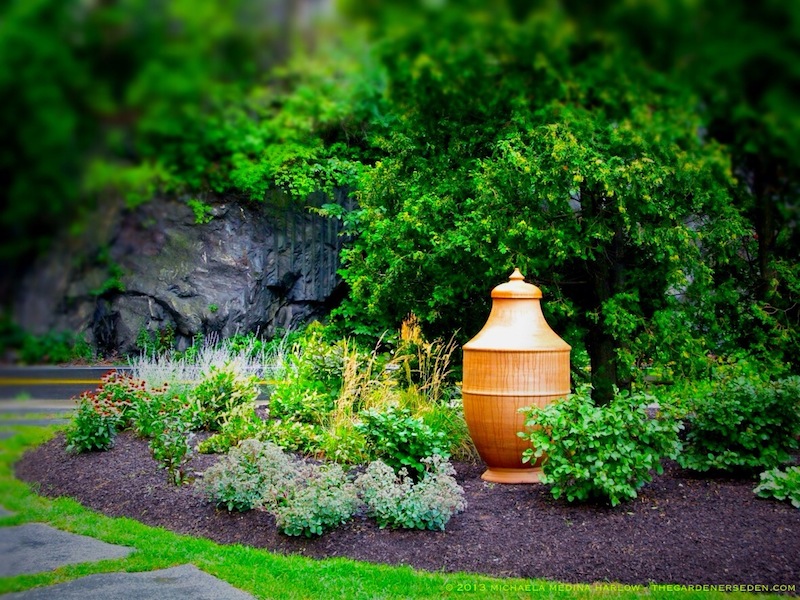 Â Cleanly cutting the edge of a border with a half-moon edger, and mulching the “V”, helps with maintenance throughout the growing year {Pictured: a client’s newly planted garden with English-style edging. Pretty vessel is by Vermont artist, Stephen Procter}
 Cleanly cutting the edge of a border with a half-moon edger, and mulching the “V”, helps with maintenance throughout the growing year {Pictured: a client’s newly planted garden with English-style edging. Pretty vessel is by Vermont artist, Stephen Procter}
Beauty is in the eye of the beholder, and every gardener has their own, unique preference in garden style. But well-maintained gardens, be they casually designed or strictly formal, alway seem to elicit the most oohs and ahs. So what keeps a border looking neat and tidy all season long? Well, if your gardens connect to lawn, one of the secrets is an English-style edge, and a thick layer of weed-supressing mulch.
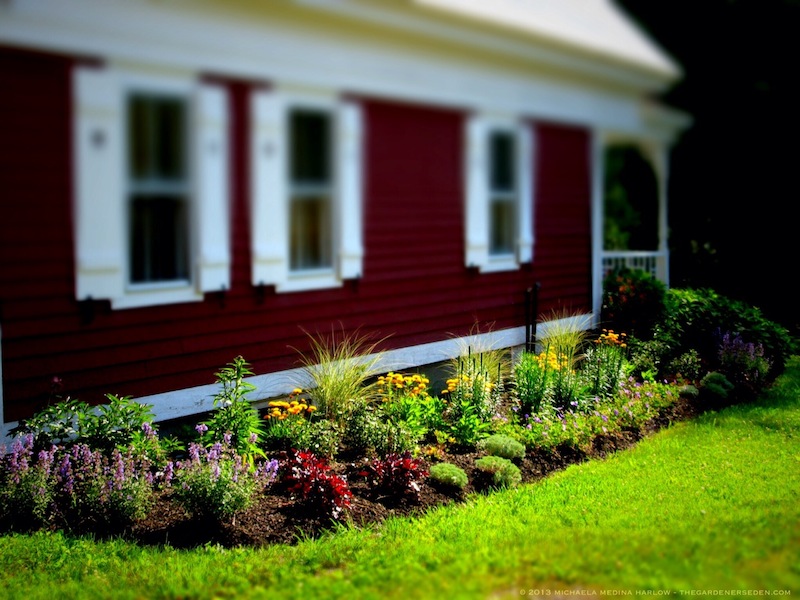 Â Even the simplest, cottage-style garden design is elevated to elegance by cleanly edging and mulching the border {pictured: three of my clients’ newly installed gardens; edged and mulched}
 Even the simplest, cottage-style garden design is elevated to elegance by cleanly edging and mulching the border {pictured: three of my clients’ newly installed gardens; edged and mulched}
A classic English-style edge is a simple and clean-looking way to define the line between lawn and garden. Although the look is quite precise, English-style edging is appropriate in most any garden setting; from formal to country casual. Inexpensive to create and blissfully easy to maintain, I just love the way a sharp edged line brings the bold shapes, colors and textures of a layered perennial border into focus. When designing new gardens in landscapes with sweeping lawns, I often opt for the English-style edge to maintain distinct, weed-free boundaries between grassy pathways and perennial borders. Crisply cut edges help to keep a garden looking great all season long.
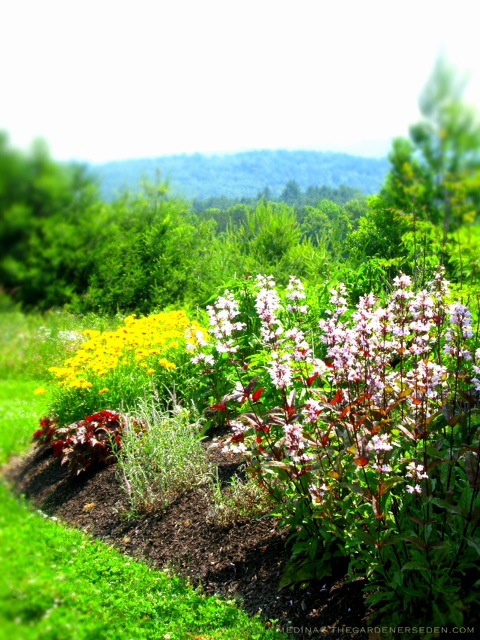 Just as neatly trimmed ends make long hair look gorgeous, crisply defined edges in a garden highlight the beauty of a well-maintained perennial border {one of my client’s gardens in late spring}
Just as neatly trimmed ends make long hair look gorgeous, crisply defined edges in a garden highlight the beauty of a well-maintained perennial border {one of my client’s gardens in late spring}
Large landscaping companies often use mechanical edgers to create deep, sharp-lined trenches between a lawn and garden and then dress these trenches with mulch. Mechanical tools work very well on big projects, but they are quite expensive and consume unnecessary fossil fuels. For home landscapes, I have always used a manual half-moon edger and my own elbow grease to create and maintain perennial borders in style. It’s great exercise!
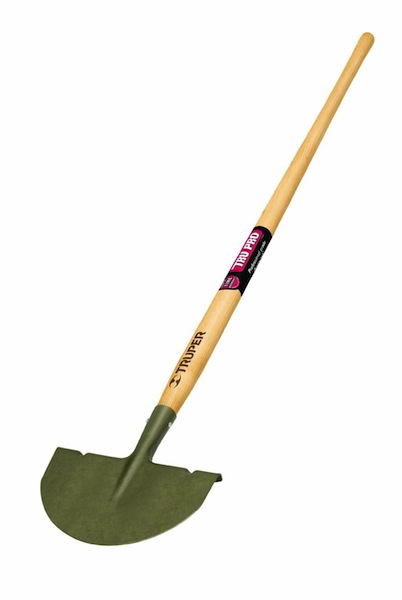 Â Forged, Half-Moon Edger by Truper
 Forged, Half-Moon Edger by Truper
The line of the garden is measured and, if new, marked out with chalk dust or string. A straight line is then cut (with the half-moon edger or a straight blade spade) through the sod to a depth of about 4-6 inches. When working a new bed, the sod is then removed from inside the cut line, and compost/loam is added to the planting bed. In a renovation of an older bed, re-establish the line by digging a new trench to a depth of at least 6 inches. I rock the tool back and forth a bit to create a “v” shape. New mulch is mounded up from the center of the “v” and into the garden bed to create a weed barrier. If you are trying this method for the first time, be patient with yourself. With a little practice, your edges will become clean, precise and even. I’ve taught many gardeners how to use a half-moon edger. A little patience goes a long way when you’re learning something new! The border pictured below is the very first effort of a new gardener. Not bad for a first shot!
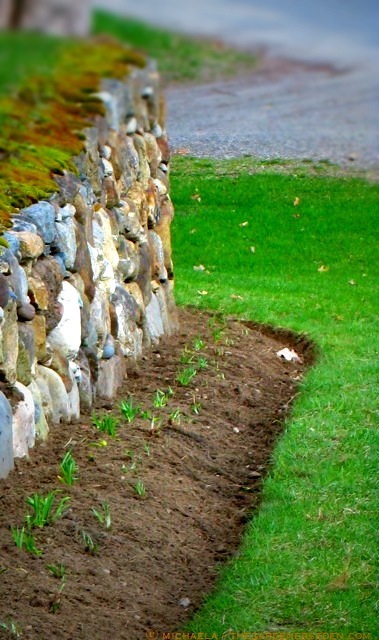 Â This freshly-cut edge on a new perennial border —the first effort of a new gardener— was cut with a hand held edging tool, like the one pictured above
 This freshly-cut edge on a new perennial border —the first effort of a new gardener— was cut with a hand held edging tool, like the one pictured above
Although some gardeners like to fill the trench with aluminum or plastic strip to hold border edges, this isn’t really necessary. With with yearly maintenance and mulch, the earthen edge will hold back weeds on its own.  In my own garden I prefer to keep the earthen trench filled with mulch, and maintain it twice a year with touch ups from the half-moon edger. The first round of edging happens along my lawn/garden borders every spring during April clean-up, just before seasonal mulch (I use well rotted compost mulch mixed with just a bit of dark, natural bark). The second round of edging usually happens in early to mid July, when perennials borders begin to look a bit blowzy and need a bit of deadheading and primping. But twice yearly maintenance isn’t always necessary. In the cottage garden atop the article and the minimalist garden pictured above and below, a crisp edge is cut and mulched along the borders once a year in early spring. In landscapes with lawn and perennial borders, I’m  very fond of English-style edging. This clean but natural look works well with many different garden styles and it’s both inexpensive and easy to maintain.
 The edge of this welcoming garden —filled with North American native plants— is looking neat and pretty, even in late summer {pictured: my client’s garden in late summer of 2012}
The edge of this welcoming garden —filled with North American native plants— is looking neat and pretty, even in late summer {pictured: my client’s garden in late summer of 2012}
Photography and Text â“’ Michaela Medina Harlow/The Gardener’s Eden. All images, articles and content on this site (with noted exceptions), are the original, copyrighted property of The Gardener’s Eden and may not be reposted, reproduced or used in any way without prior written consent. Contact information is in the left side bar. Please do not take my photographs without asking first. Thank you!Â
Do you enjoy The Gardener’s Eden? You can help support this site by shopping through affiliate links. A small percentage of each sale will be paid to this site, helping to cover web hosting and maintenance costs. Thank you so much for your support!

3 Replies to “Cutting Edge Garden Maintenance: Sharply Defining Beds & Borders . . .”
Comments are closed.
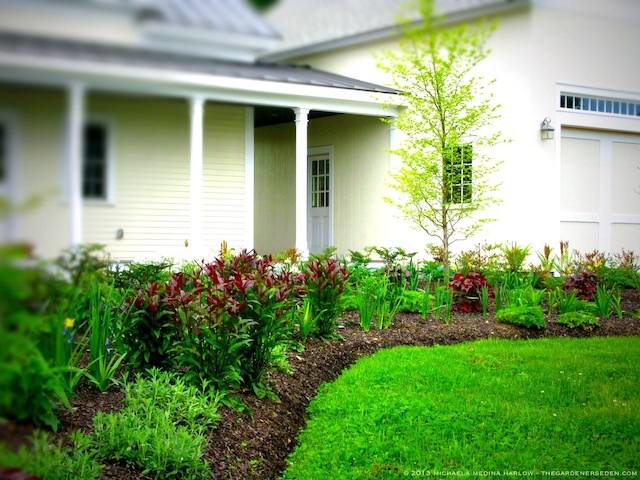
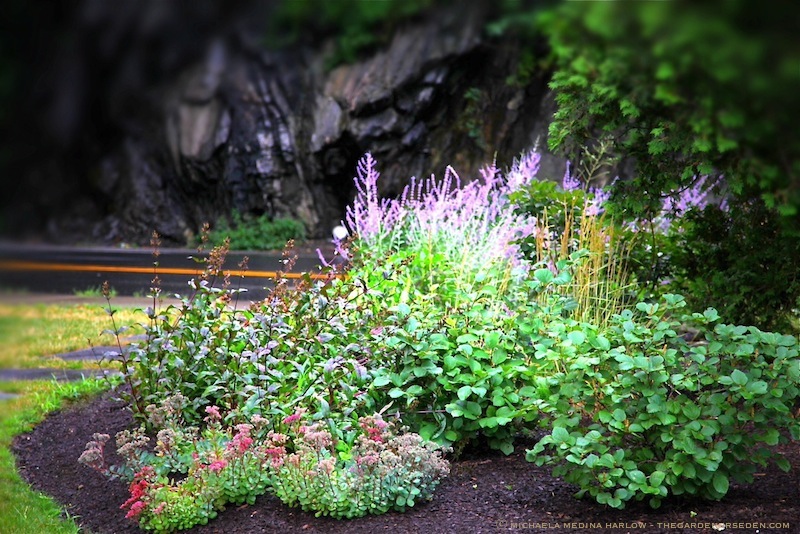

Oh my, you’re ramping up the excitement level to a fever pitch…
(Everything’s still too spongy here to even contemplate walking on it yet):
Such gorgeous photos and an encouraging post as always!: )
xo D.
Hey there Deb, OH yes, everything at my place is spongy too (still snow in many spots), but for my neighbors to the south, cutting back and raking have ceased and the soil is ready to work. Amazing how far behind I am this year, in terms of the season. But, at least I have early blooming shrubs and bulbs to keep me satisfied. The songbirds are returning too … Bliss!
Thank you for the lovely words of encouragement. I posted this article a couple of years ago, but just updated it with fresh (better) photos :) xo M
LOL! Yes, of course; you’ve got such a cozy place here that it’s hard to keep in mind that this isn’t a one-on-one conversation.
As to the late arrival of Spring, well, I’m hoping that means a better planting year than we’ve had for a while… (Fingers crossed; ) hugs, D.